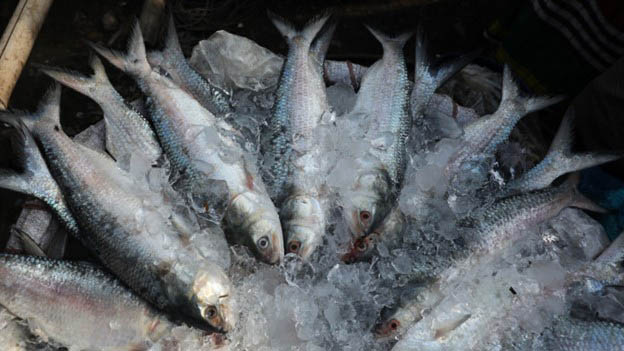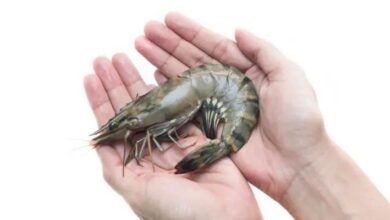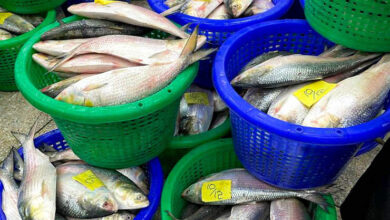
The current production of Hilsa in Bangladesh has exceeded all previous records, reaching 571 thousand metric tons or MT. Consequently, in only a few years, the production has soared by 92%.
Bangladesh’s national fish, the Hilsa, makes significant contributions to the country’s exports, jobs, and economy. Hilsa provides more than 12.09% of the nation’s fish production.
“Since 2001–2002, the production has climbed by more than twice,” said fisheries Minister Abdur Rahman.
As to the minister, the effective implementation of the mother Hilsa conservation campaign in 2023 led to a successful spawning rate of up to 52.4% of Hilsa, a 104.8 percent increase over the base year 2001-02.
During the 2016-17 fiscal year, Bangladesh produced 496 thousand MT of Hilsa. The amount was raised to 565 thousand MT in the fiscal year 2020-21. Hilsa output climbed by 85% in the last 12 years, and the supply of large-sized Hilsa increased by 25%.
Bangladesh has seen a significant increase in Hilsa production since launching a ‘Jatka’ (immature/juvenile Hilsa 6-10cm long) preservation program in 2003-4. Furthermore, the Department of Fisheries (DoF) launched a USD $2.24 million “Hilsa Development and Management Project” in 2019 to boost Hilsa output.
Furthermore, twice a year, the government imposes a ban on the netting of Hilsa and other endangered fish species in an effort to boost fish output. First of all, a two-month prohibition is in place starting on March 1st to safeguard the growth of the fry. In order to allow brood Hilsa and other fish species to lay eggs, a second ban will begin on October 1 and extend for 22 days.
Additionally, since 2001, the Government has prohibited the use of gillnets, (a type of small-mesh net constructed of monofilament synthetic nylon fiber) which is very efficient at collecting enormous quantities of fish. The Government took this step to curb indiscriminate fishing and the destruction of aquatic life.
All these efforts result in steady growth of Hilsa production every year.
However, the annual growth rate of Hilsa output has been decreasing in recent years, despite an overall trend of increase in the catch. The usage of prohibited gillnets widely, the illegal catching of brood and Jatka Hilsa, and the effects of climate change, such as irregular rainfall, are among the major causes of this decline.
| Year | Production (TONS) | Growth Rate (IN %) |
| 2021-22 | 566593 | 0.24 |
| 2020-21 | 565183 | 2.68 |
| 2019-20 | 550428 | 3.30 |
| 2018-19 | 532795 | 3.01 |
| 2017-18 | 517189 | 4.18 |
Just illegal Jatka fishing caused the nation to lose around 58,000 tons of mature Hilsa in 2021. The largest obstacle to brood Hilsa leaving the sea to lay eggs in rivers is the usage of gillnets in river estuaries.
Despite the restriction, some fishermen continue to use gillnets to catch Hilsa, taking advantage of the lack of enforcement and contributing to the declining population of this highly valuable fish in this region of the world.
Those in the Hilsa business community blamed some law enforcement officials. They claimed that as long as the defenders continue to operate like predators, no action taken by the government will be beneficial.
Jaber Bin Abdul Bari
Department of Oceanography, NSTU




